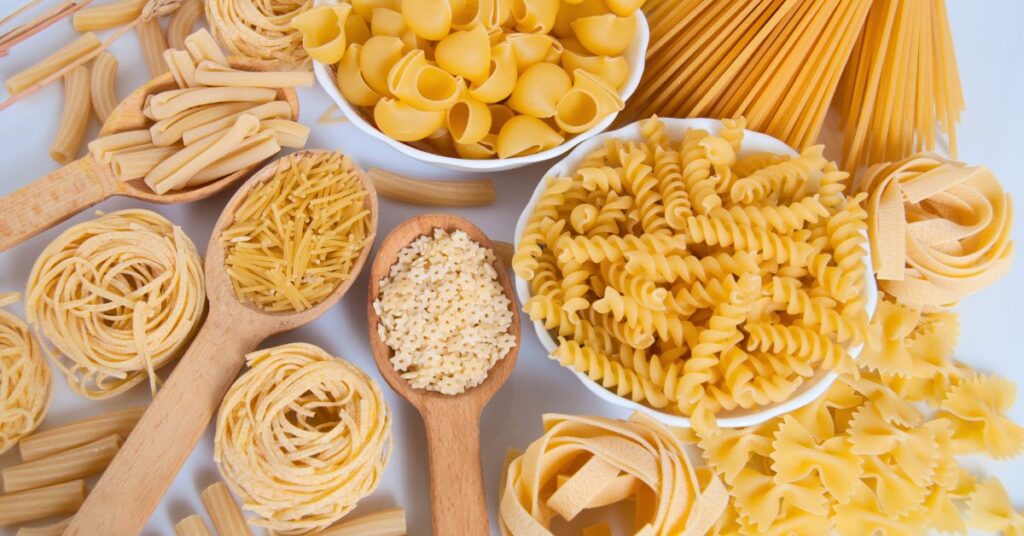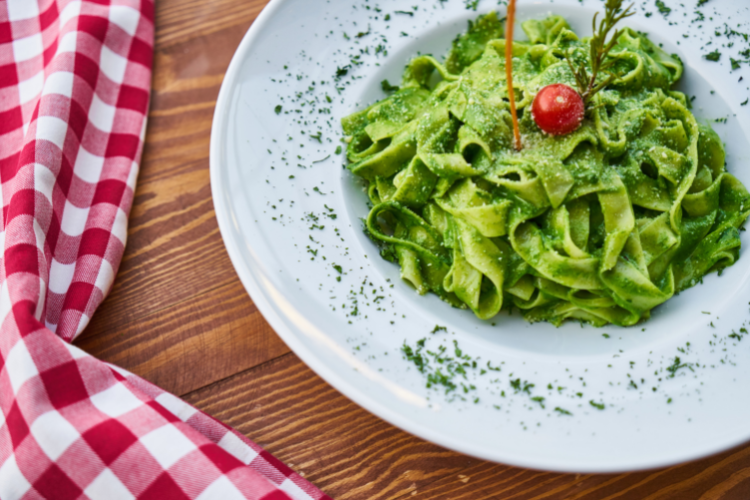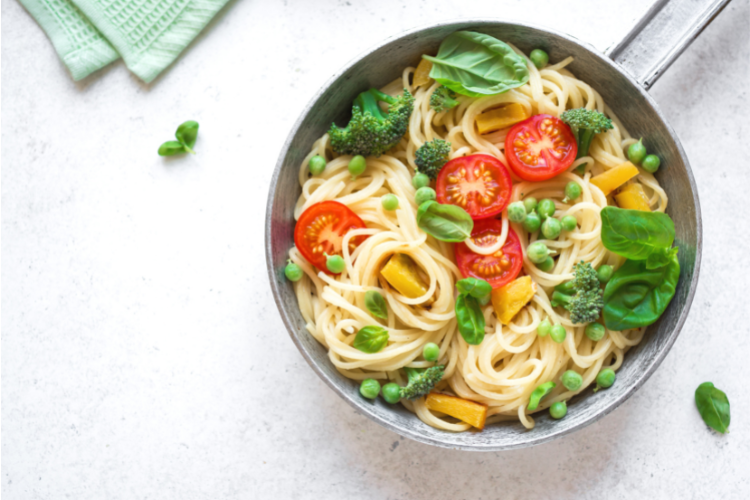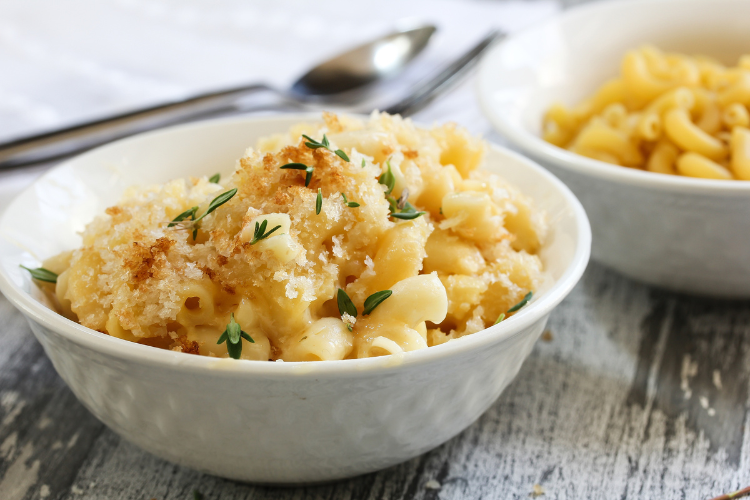The Total Health Experience: Eat, Play, Learn
Join us in the Caribbean for a week-long all-inclusive beach immersion.
October 18-25, 2025, Puerto Plata, Dominican Republic


Do you love the refreshing flavor of chilled pasta salads during the summer, or the warm comfort of a hearty holiday lasagna? A lot of people adopting a whole food, plant-based (WFPB) lifestyle wonder whether pasta is off limits, especially because there are so many different types of pasta.
The good news for anyone who loves noodles of all kinds is that plant-based pasta options are readily available, tasty, and packed with nutrition.
Here’s how to find the healthiest, tastiest options for all your favorite dishes.
Not all pasta is created equal. Although the type of wheat used to make pasta—durum wheat—starts out as a whole grain,[1] it’s usually refined into either fine durum flour or a coarser flour called semolina. The refining process removes both the bran and germ from the original grain, leaving behind the inner endosperm.
Removing the bran and germ from durum strips away much of the protein, fiber, and nutrients. The remaining carbohydrates are digested quickly, resulting in rapid blood sugar fluctuations. This often leaves you feeling hungry again soon after a meal, which can lead to overeating and weight gain.[2]
Repeated blood sugar spikes may also increase your risk for heart disease by:
Continuing to eat refined pasta and other refined foods can create a cycle that drives blood sugar higher over time, causing more blood vessel damage from inflammation and oxidative stress.[5] Eventually, plaque can build up in your arteries and increase the likelihood of a heart attack or stroke.
This is why pasta has gotten such a bad rap—and why many people are confused about whether it’s okay to eat on a WFPB diet.

Now for the good news: There are plenty of minimally refined pastas to try! They come in all shapes and sizes and can be used as 1:1 replacements in your favorite pasta recipes.
First up is pasta made from whole grains, including:
Another tasty option is pasta made from legumes like:
The best part? Many of these plant-based pasta varieties are available at your local grocery store. Familiar brands like Ronzoni and Hodgson Mills offer whole-grain pastas; just read the label to make sure you get a 100% whole grain variety (some products listed as whole grain only contain 51%). Jovial and Ancient Harvest make pasta from brown rice, quinoa, and other grains. If you prefer a bean-based pasta, check out Explore Cuisine, Banza, Veggie Craft, Tolerant or Chickapea.
You may also be able to find whole-grain pastas from artisan pasta makers in your area. Check your local farmers’ market for unique varieties and flavors.

Using pasta made from whole grains or beans instead of refined wheat adds nutrients and health benefits to some of your favorite comfort foods.
From a nutrition perspective, the difference in fiber content is the most notable. Minimally processed pasta has around three times the fiber of refined varieties, which can improve gut health in several ways:
You may get additional benefits from cooling and reheating pasta before eating it. This appears to reduce starch digestibility, leading to a lower and slower blood sugar response.[6] Eating cold pasta produces a similar, although less pronounced, effect. Blood sugar also returns to normal more quickly after eating reheated pasta compared with a hot, freshly prepared dish.
One reason for pasta’s effects on blood sugar may be the structure that’s created from the high-pressure compression used in pasta making. This process seems to keep particle sizes large enough to prevent the fast digestion that causes blood sugar spikes, which may play a bigger role in blood sugar control than cooling and reheating.[7], [8]
And then there’s another interesting phenomenon known as the “second meal effect.” Eating a meal containing beans or whole grains—or both—appears to reduce caloric intake at the next meal, even when that meal is breakfast the following morning.[9] This hasn’t been tested specifically with pasta, but it’s likely that minimally processed varieties could have a similar effect.
Whether or not this turns out to be the case, you may still be able to lower your caloric intake by switching up your pasta because some plant-based varieties have fewer calories per serving than refined pasta. As an added bonus, a serving of lentil-based pasta can have more protein than a half a cup of cooked lentils, which can also help you feel full and satisfied for longer.[10]

Now that you know pasta can be part of a healthy plant-based diet, it’s time to get cooking! Here are some delicious pasta recipes to fuel your culinary creativity:
You can use any pasta variety in these dishes, so have fun experimenting! Make sure to read the cooking instructions before you get started, though; cooking times differ depending on what the pasta is made of.
As you can see, there are many ways to enjoy pasta on a plant-based diet. Just use whole grain or bean varieties in place of refined for one of the easiest—and tastiest!—ways to put more plants on your plate.
Copyright 2025 Center for Nutrition Studies. All rights reserved.